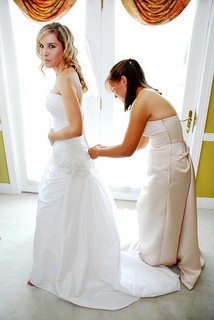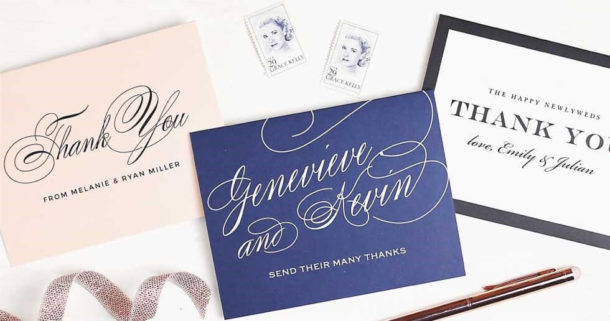Shopping for a wedding gown? Yes, we understand the finding a dress you like can be overwhelming. However, a good starting point for brides is deciding what fabrics you would and would not consider for your dress. Here is an easy guide that will aid in narrowing down your wedding gown fabric options.
Natural or Man Made
 There are both natural and man made wedding gown fabrics as well as blends. The two most important factors are breathability and price. A natural fabric will always breathe better than a man made fabric but that is not to say they are necessarily more light weight. Remember you will be encountering various temperatures and activity levels throughout the day which means you could be faced with some potential less than romantic perspiration challenges. Consider the season to ensure you are comfortable. Most brides prefer natural fabrics such as those derived from silk. Silk is used to make satins and even velvets and are also used as “raw” silk to produce a “nubbier” fabric with less sheen. However not all brides can afford natural silks and satins as they tend to be at the higher end of the bridal gown budget scale.
There are both natural and man made wedding gown fabrics as well as blends. The two most important factors are breathability and price. A natural fabric will always breathe better than a man made fabric but that is not to say they are necessarily more light weight. Remember you will be encountering various temperatures and activity levels throughout the day which means you could be faced with some potential less than romantic perspiration challenges. Consider the season to ensure you are comfortable. Most brides prefer natural fabrics such as those derived from silk. Silk is used to make satins and even velvets and are also used as “raw” silk to produce a “nubbier” fabric with less sheen. However not all brides can afford natural silks and satins as they tend to be at the higher end of the bridal gown budget scale.
Structured or Soft
There are two basic types of fabrics: structured and soft. Many gowns use a combination of fabrics to create layers and effect. Structured fabrics are used on areas such as the bodice and the base of a wedding dress and are able to be sewn into pleats, folds and fitted parts of the dress. Soft fabrics are delicate and ethereal and provide the lovely more romantic details of a dress such as lace and tulle. These fabrics can be draped and are often used as overlays, on sleeves or as detail for fuller skirts.
Types of Fabrics
There are a lot to choose from, within each category. Here is a brief overview to get you started.
Lightweight or Transparent
- Batiste: Transparent and soft.
- Charmeuse: Slight sheen with a satin touch.
- Chiffon: Transparent and ethereal available in man made and natural silk versions used for layering or on sleeves and wraps as well as overskirts.
- Crepe: A crinkly, soft appearance.
- Duchesse Satin: A lighter weight man made satin combining silk and rayon or polyester.
- Georgette: A sheer fabrics with a crepe like surface.
- Illusion: Netted fabric for necklines or sleeves.
- Organza: Very crisp, much like a tulle but with better flow such as gazar.
- Organdy: A stiffer transparent fabric.
- Tulle: Netting like that on tutus.
- Lace: A sheer, patterned material available in styles such as Chantilly and Battenberg.
Heavy Fabrics
- Brocade: A woven fabric ideal for winter and fall similar to Damask with raised designs.
- Faille: A heavy substantial ribbed fabric.
- Gabardine: Features lines on the diagonal and is very durable.
- Jersey: Good for form fitting dresses as it is very elastic.
- Pique: A waffle-weave fabric.
- Satin: Lovely sheen and smoothness common on wedding gowns in choices such as Peau de Soie which is grainier or Silk-faced Satin which is smoother and glossier.
- Silk: There are several types of silk including raw silk such as silk Mikado, Shantung and Dupioni each with a distinct look and varying sheens and roughness. All are at the higher end when it comes to budget.
- Taffeta: Slightly ribbed yet smooth and crisp also consider Moire with is a silk taffeta featuring a “wavier” texture.
- Velvet: Very thick and felted fabric traditionally made from silk.
When shopping for your wedding gown you have to try on the dress and consider the comfort, look and feel of the wedding gown fabric. Try sitting, standing and walking to make sure there is nothing unsettling about the fabric such as loud swishing or uncomfortable stiffness.
[hs_action id=”7672″]








